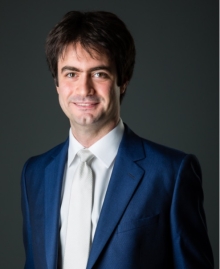
Research at the boundary of engineering and life sciences
The Biomedical Engineering Research Group aims to explore biological systems and solve problems at the boundary of engineering and life sciences.
Our group is multidisciplinary and incorporates interests in bio-solid and bio-fluid mechanics, biomimetics, biological and medical imaging, biomaterials and advanced modelling and simulation. Facilities are state-of-the-art and exploit the latest in manufacturing technology, predominantly using 3D printing, as well as the recently established Zeiss Global Lab to support 3D microCT imaging and numerical/FE modelling capacity.
Specific solutions the group provides include understanding the function of biological systems in healthy and diseased conditions, multi-scale modelling of structure-function relationships in tissues complemented by novel bioimaging, and the manufacture of bioinspired structures and their optimisation for conventional and translational engineering applications.
The group has established links with key strategic partners including Diamond Light Source, Carl Zeiss Ltd., Glaxo Smith Klein, the National Heart and Lung Institute, and the Royal National Orthopaedic and Queen Alexandra Hospitals. The group has attracted funding from the Royal Society as well as from Research councils such as the EPSRC and STFC.
Publication highlights
-
Damage as a material phase transition
Bucchi, A, De Tommasi, D, Puglisi, G & Saccomandi, G 2023, Journal of Elasticity. https://doi.org/10.1007/s10659-023-10014-z
-
Large isotropic elastic deformations: on a comprehensive model to correlate the theory and experiments for incompressible rubber-like materials
Anssari-Benam, A 2023, Journal of Elasticity. https://doi.org/10.1007/s10659-022-09982-5
-
A new dissipation function to model the rate-dependent mechanical behaviour of semilunar valve leaflets
Anssari-Benam, A, Tseng, Y-T, Pani, M & Bucchi, A 2023, Journal of Biomechanical Engineering. https://doi.org/10.1115/1.4056917
-
Open-porous magnesium-based scaffolds withstand in vitro corrosion under cyclic loading: a mechanistic study
Bonithon, R, Lupton, C, Roldo, M, Dunlop, JN, Blunn, GW, Witte, F & Tozzi, G 2023, Bioactive Materials, vol. 19, pp. 406-417. https://doi.org/10.1016/j.bioactmat.2022.04.012
-
Effect of radiation-induced damage of trabecular bone tissue evaluated using indentation and digital volume correlation
Karali, A, Dall'Ara, E, Zekonyte, J, Kao, AP, Blunn, G & Tozzi, G 2023, Journal of the Mechanical Behavior of Biomedical Materials, vol. 138, 105636. https://doi.org/10.1016/j.jmbbm.2022.105636
-
Helically arranged cross struts in azhdarchid pterosaur cervical vertebrae and their biomechanical implications
Williams, CJ, Pani, M, Bucchi, A, Smith, RE, Kao, A, Keeble, W, Ibrahim, N & Martill, DM 2021, iScience, vol. 24, no. 4, 102338. https://doi.org/10.1016/j.isci.2021.102338
-
Opposing patterns in self-reported and measured physical activity levels in middle-aged adults
Luo, J & Lee, RYW 2021, European Journal of Ageing. https://doi.org/10.1007/s10433-021-00657-z
-
Effect of damping on waypoint tracking control of an underactuated small robotic boat
Huang, Y & Yu, H 2021, International Journal of Intelligent Control and Systems, vol. 1, no. 2, pp. 10-18.
Research group leader

Media ready expert







